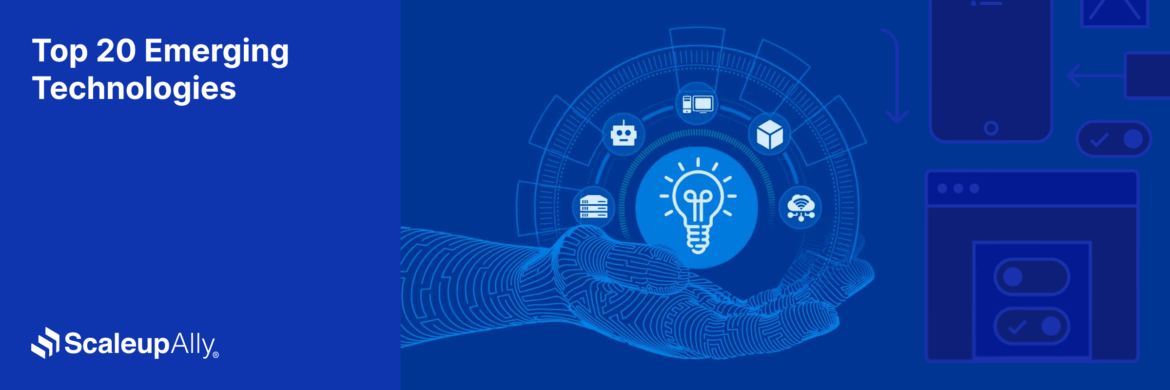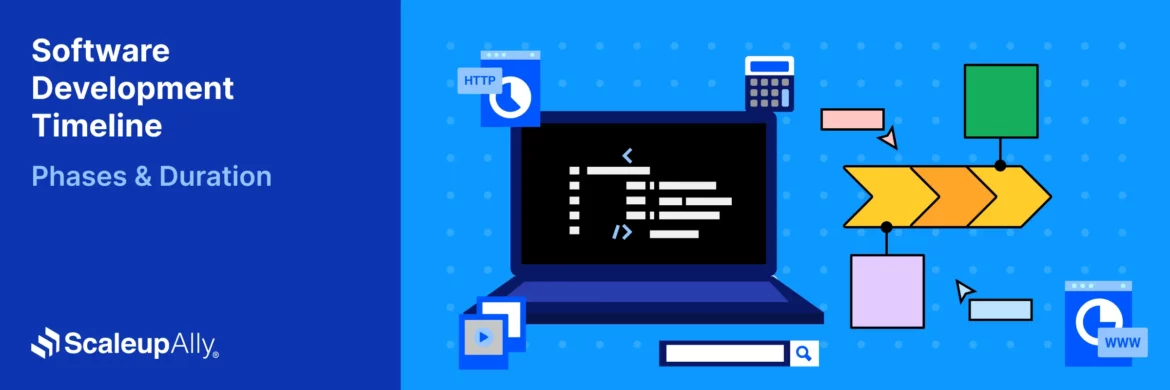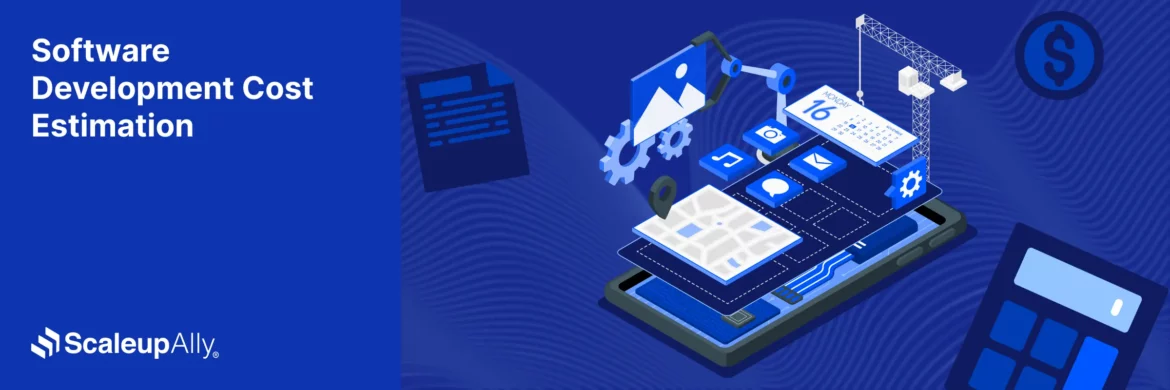
36 Game-Changing Low-Code Trends to Know in 2025
Suprabhat Sen | May 1, 2025 , 11 min read
Table Of Content
We’ve spent enough time researching low code trends, and a lot has changed for a platform that was started as a simple drag-and-drop tool for basic apps
The low-code trends emerging in 2025 offer a clear glimpse into the future of low-code development.
Some will surprise you and others might make traditional developers uncomfortable. But all of them matter if you’re making technology decisions this year.
Let’s explore 36 low-code trends redefining app development in 2025, and learn how businesses are leveraging low-code platforms for speed, scalability and innovation.
Key Takeaways
- Low-code has moved far beyond simple tools for basic apps. It’s now reshaping how enterprises build software, with 65% of all app development expected to use these platforms by 2025.
- Non-technical employees are driving this revolution with nearly 60% of custom apps now built outside IT departments.
- Companies using low-code platforms for customer-facing apps see 58% revenue increases on average, while development happens up to 10X faster than traditional methods.
- As the market grows to a projected $187 billion by 2030, we’re seeing AI integration, industry-specific solutions, fusion teams of citizen and professional developers and capabilities expanding into previously complex areas like blockchain and machine learning.
Top Low-Code Trends in 2025
1. Widespread Adoption of Citizen Development
More and more non-technical employees are building apps for their companies. Around 60% of custom apps are built outside of IT departments, and 30% are created by people with little or no coding experience. This shows a big shift where business users are now in charge of creating apps using low-code tools.
2. Intelligent Code Recommendations Using AI
Low-code platforms are now using AI to help developers by predicting what they’ll need next. The system can suggest entire parts of an app based on what you’re working on. With 83% of businesses considering AI a top priority, these tools help make non-expert developers more efficient, especially with the shortage of skilled workers.
3. Integration of Visual Process Mining Tools
Low-code platforms now automatically analyze your current workflows before you start building. They identify inefficiencies and suggest ways to improve processes. Studies show that companies using these tools create solutions 56% faster than those using traditional development methods, changing how businesses handle automation.
4. Accelerated Enterprise Adoption
Major corporations have moved beyond experimentation. By 2025, 75% of large enterprises will use at least four low-code development tools for both IT and citizen initiatives. This widespread adoption signals the low-code development platform market’s maturation from niche to essential technology.
5. Transforming Software Delivery Through Cross-Platform Deployment
New low-code tools deploy to web, mobile, wearables, and IoT from single builds. This multiplies developer productivity without requiring multiple specialists. The trend addresses why companies build apps 10X faster with these platforms, according to Forrester, reshaping deployment expectations completely.
6. Business-Led IT Purchasing
Department leaders are now deciding to invest in low-code tools. Since 82% of companies see value in building custom apps outside of IT, budgets are shifting to support this. As a result, software spending is changing across industries, and the low-code market is growing quickly.
7. Dominance of API-Driven Development Models
Modern low-code platforms prioritize API connections over closed ecosystems. Every component operates as a consumable service. This architecture shift helps explain why low-code solutions reduce development time by 90%, according to Red Hat research, making integration significantly less painful.
8. Fusion Development Teams
New collaborative models pair citizen developers with professional coders. Each handles appropriate tasks within governance frameworks. This explains how the average company avoided hiring two IT developers using low-code tools while gaining $4.4 million in business value over three years.
9. Embedded Analytics Everywhere
Data visualization tools are now baked into core low-code functionality. The future of low-code includes analytics in every app by default. In 2021, 33% of organizations were already using low-code for data modeling and visualization, according to Statista. That number has now skyrocketed.
10. Containerized Low-Code Applications
Enterprise-grade low-code now generates containerized applications for enhanced portability. This advancement allows deployment across any cloud infrastructure. With the low-code platform market projected to reach $36.43 billion by 2027, enterprise-grade features like this drive serious adoption.
11. Multi-Experience Development
Leading platforms enable creation across conversational interfaces, touch, voice, and AR/VR simultaneously. By 2024, 80% of non-IT professionals will develop IT products and services, with over 65% using these multi-experience low-code tools to meet diverse user expectations.
12. Breakthroughs in Application Runtime Performance
Early low-code platforms created sluggish applications. Today’s solutions generate code comparable to hand-written applications. This performance leap explains why companies using low-code platforms for customer-facing apps increase revenue by 58% on average.
13. Rapid Growth of Industry-Specific Templates
Vertical-focused low-code solutions dominate certain sectors. Healthcare, financial services, and manufacturing platforms include pre-built compliance features. With no-code solutions consuming 70% fewer resources than conventional platforms, these templates further accelerate industry adoption.
14. Prioritizing Developer Experience
Platforms prioritize professional developer experience alongside citizen accessibility. Advanced debugging, source control, and testing tools are standard. Since the demand for business apps is now 5X higher than available IT capacity, these tools help developers multiply their output.
15. Composable Business Applications
Apps built from interchangeable functional blocks define the latest approach. This modularity enables unprecedented reuse and adaptability. Organizations with the best development tools are 65% more innovative, according to McKinsey, with composability driving much of this advantage.
16. Embedded Machine Learning
Low-code platforms now incorporate pre-trained AI models requiring minimal configuration. This democratizes once-complex capabilities. With 84% of businesses adopting low-code or no-code tools to fill technical gaps, embedded ML represents a crucial differentiator in the market.
17. Automated Compliance Verification
Regulatory checks run automatically during development rather than after completion. This prevents costly rework cycles. Low-code solutions can reduce enterprise application development time by up to 60%, with compliance automation contributing significantly to these savings.
18. Integrating Process Automation for Greater Efficiency
RPA capabilities are now built into low-code platforms rather than purchased separately. This convergence eliminates integration headaches. To capitalize on this trend, businesses can leverage n8n automation development services for scalable, open-source workflows. The global low-code development platform market is predicted to generate $187 billion by 2030, with this convergence driving substantial growth.
19. Edge Computing Support
Low-code applications can now deploy to edge devices with limited connectivity. This expansion supports IoT use cases beyond traditional business applications. With 80% of organizations believing low-code frees developer time for critical projects, edge capabilities expand these benefits.
20. Open Source Low-Code Movement
Community-driven low-code frameworks challenge commercial platforms with transparent architectures and free core functionality. As IT represents the second-largest area for addressing skill gaps after data science, these accessible tools help organizations build necessary capabilities affordably.
21. Governance Automation
Access controls, security policies, and data handling rules are now automatically enforced across all applications. This prevents shadow IT risks. With 41% of organizations having active citizen development initiatives, governance automation becomes essential for scaling safely.
22. Micro-App Construction
Disposable, single-purpose applications replace monolithic systems. These targeted tools solve specific problems without bloat. By 2025, over 500 million apps and services will be developed using cloud-native approaches, with micro-apps representing a significant portion.
23. Development Gamification
Leading platforms incorporate achievement systems and competitive elements to accelerate learning. This transforms corporate training approaches. With average software developer salaries exceeding $100K annually, gamified low-code training creates cost-effective alternatives to traditional hiring.
24. Team Programming Models
Multiple citizens and professional developers now collaborate simultaneously on single applications. This parallelism speeds development. With 85% of workers saying no-code tools add value to their lives, collaborative features further enhance this perception.
25. Growth of Automated Testing Solutions
Self-testing applications identify problems before human quality assurance begins. This reduces project timelines. As low-code tools become 10X faster than traditional development platforms, automated testing capabilities contribute significantly to this advantage.
26. Voice-Controlled Development
Experimental interfaces enable voice commands for application creation. This further reduces barriers for non-technical users. With the low-code market valued at $7.61 billion in 2021, voice interfaces represent an emerging frontier for platform differentiation.
27. Incorporating Privacy by Design into System Development
Privacy compliance features are now built into development platforms, not added afterward. This prevents costly redesigns. As low-code application development becomes responsible for 65% of all application development activity, these features become increasingly critical.
28. Legacy Modernization Frameworks
Specialized tooling converts outdated systems into modern applications automatically. This reduces replacement costs. With OutSystems raising $422.1M in funding, legacy modernization capabilities represent a primary investment focus across the industry.
29. Laying the Groundwork for Quantum Computing Adoption
Forward-thinking platforms now include abstraction layers for quantum algorithms. This future-proofs applications for coming transitions. As the low-code development platform market evolves, quantum readiness represents a significant competitive advantage for forward-looking vendors.
30. Next-Generation Super-Abstraction Architectures
Development concepts now express business outcomes rather than technical implementations. This elevates citizen capabilities significantly. As Mendix raised $38M across three funding rounds, super-abstraction represents a key area where investor capital is creating market differentiation.
31. AR/VR Interface Creation
Low-code now extends to spatial computing experiences previously requiring specialized skills. This opens entirely new application categories. With ServiceNow raising $83.7M across six funding rounds, extended reality capabilities represent significant R&D investment across the market.
32. Effortless Blockchain Integration for Enterprises
Distributed ledger applications no longer require cryptography expertise. Pre-built components handle the complexity. By 2025, 70% of new organizational applications will use low-code or no-code technologies, with blockchain among the most technically complex features simplified.
33. Component Marketplaces Expansion
Third-party ecosystems now offer thousands of application building blocks for purchase. This creates entirely new micro-economies. With Appian raising $47.5M across two funding rounds, marketplace development represents a substantial investment focus industry-wide.
34. Development Platform Consolidation
Major tech vendors acquire smaller innovators to build comprehensive platforms. This reduces tool fragmentation for customers. More than 95% of new digital workloads will be deployed on cloud-native platforms by 2025, compared to just 30% in 2021, platform consolidation helps enterprises manage this massive scale.
35. Integration-as-a-Service Models
Connection to external systems becomes subscription-based rather than built-in. This reduces development complexity. With 80% of organizations believing that low-code frees developer time, integration services allow focus on business logic rather than connectivity challenges.
36. Cross-Platform Analytics
Performance and user behavior data flow automatically between applications. This creates comprehensive business insights. With 33% of organizations using low-code for data visualization in 2021, cross-platform analytics represents the logical next evolution in the market.
Conclusion
The low-code revolution is accelerating, and if you are ready to explore whether this approach truly represents development’s future, check out our analysis on “Low Code Development: Is It The Future of Development?”
This companion piece tackles the tough questions about where traditional coding fits in this new landscape.
Frequently Asked Questions
Q: What is the future of low-code development?
The future of low-code lies in AI-powered development, deeper enterprise integration and true business-IT collaboration. By 2030, the market will reach $187 billion as these platforms become the standard way most organizations build software.
Q: How secure are low-code platforms?
Modern low-code platforms now include enterprise-grade security features like automated compliance verification, role-based access controls and built-in vulnerability scanning. The key is choosing platforms with robust governance frameworks that maintain security without sacrificing development speed and quality.
Q: What industries are adopting low-code in 2025?
Financial services, healthcare, manufacturing and public sector organizations lead adoption due to specialized, compliance-ready templates. Retail and professional services follow closely behind. With industry-specific solutions available, virtually every sector now has tailored low-code options that can address their unique challenges.
Q: Can low-code platforms scale for enterprise use?
Absolutely. Enterprise scalability has transformed with containerized deployments, cloud-native architectures and performance optimizations. Large organizations now routinely support thousands of applications and millions of users on modern low-code platforms without performance degradation.
Related Blogs

Top 20 Emerging Technologies of 2026
Discover the top 20 emerging technologies of 2026. Explore which innovations are driving change across healthcare, finance, manufacturing, and other crucial industries.
ScaleupAlly Team
Dec 16 ,
9 min read

Software Development Timeline: Phases, Duration & Estimation Guide
Understand the software development timeline with phase durations, key factors, hidden delays, and practical methods to estimate project time.
Suprabhat Sen
Nov 29 ,
16 min read

Software Development Cost Estimation Guide: What’s Included & What Affects the Price
Explore software development cost components, major pricing factors, and practical estimation methods to plan your project accurately from start to finish.
Suprabhat Sen
Nov 29 ,
14 min read


